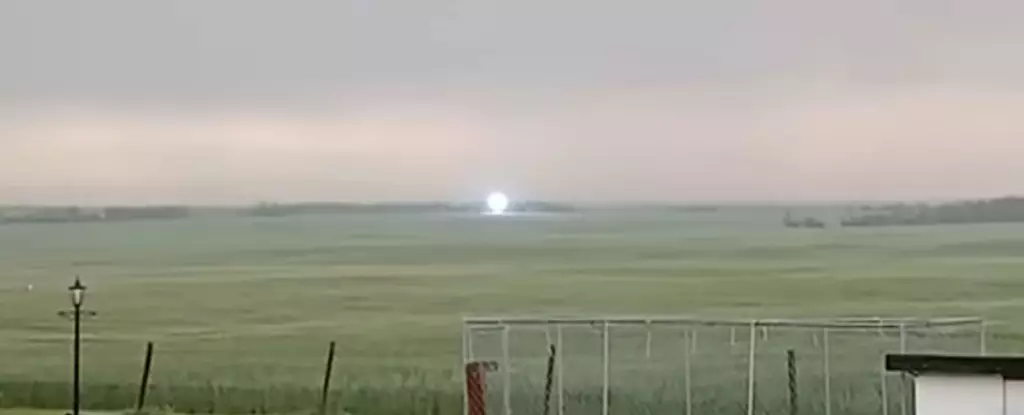Human curiosity has always been fueled by the unknown, particularly when it involves the natural world’s most mysterious phenomena. Rare atmospheric events like ball lightning captivate not just scientists, but the public imagination, offering a tantalizing glimpse into the limits of scientific understanding. This allure is compounded by the fact that such phenomena often occur spontaneously, defying the controlled environments that modern science relies upon for validation. For many, witnessing a glowing orb hover and then vanish during a storm imbues the experience with a supernatural or extraterrestrial aura, challenging our assumptions about what weather and physics are truly capable of. Our deep-seated desire to explain these phenomena often leads us to dramatic interpretations—either overly skeptical dismissals or sensationalized theories about alien encounters or unknown natural forces.
However, this quest for certainty edges toward obsession, sometimes blinding us to the nuances and skepticism that genuine scientific inquiry demands. What is truly remarkable about cases like the Canadian lightning event is not just the event itself but the broader debate it sparks—about the limits of our technology, the gaps in our understanding, and whether the mysteries should be dismissed or embraced as part of our world’s complexity. The phenomenon’s rarity also reveals an uncomfortable truth: the universe keeps many of its secrets despite our relentless pursuit of knowledge.
Scientific Challenges and the Myth of Complete Knowledge
Despite decades of research, phenomena such as ball lightning remain stubbornly elusive. Scientific efforts to reproduce and understand these luminous spheres often fall short because they hinge on rare and unpredictable conditions. Laboratory experiments have produced plasma balls that mimic some aspects of ball lightning, yet these are artificial prototypes lacking the spontaneous and natural beauty of their wild counterparts. This discrepancy underscores a critical point—scientific knowledge is inherently provisional, constructed through models, approximations, and sometimes, educated guesswork.
The incident captured by the Pardy family in Alberta exemplifies this predicament. On the surface, it appears to be a straightforward case—yet, the ambiguity persists. The observers and researchers are left to analyze fleeting evidence, which may or may not embody the physical reality they seek to confirm. Skeptics argue that many such sightings are misinterpretations of mundane phenomena—power surges, reflections, or camera artifacts—highlighting our tendency to see patterns in chaos. Conversely, proponents like Ed Pardy suggest their sighting could be an authentic ball lightning event, a thrilling but unconfirmed piece of the natural world’s puzzle.
This tension between skepticism and belief reflects a broader philosophical debate: can we ever truly explain phenomena that defy our current understanding without resorting to sensationalism? Or is the very mystery a sign of the universe’s boundless complexity—a reminder that some truths may forever evade scientific certainty? The difficulty lies not only in capturing these events but in interpreting their significance without distorting their essence.
The Cultural and Scientific Implications of Unexplained Light Shows
For many, stories of mysterious orbs lingering during storms evoke a sense of wonder but also raise questions about the limits of scientific explanation. The media’s portrayal of such incidents fuels public fascination, often veering into speculation about extraterrestrial craft or supernatural intervention. While these narratives may capture imaginations, they also risk trivializing genuine scientific curiosity by sensationalizing the unknown.
From a scientific perspective, phenomena like ball lightning challenge us to expand our models of plasma physics and atmospheric science. They serve as provocative anomalies—real-world exceptions that question the universality of our current theories. Such episodes highlight the importance of maintaining intellectual humility, recognizing that what we know is often just a snapshot of a broader, more intricate reality.
At the same time, they remind us that scientific progress often begins with curiosity and skepticism. The careful investigation of these phenomena can lead to breakthroughs—developing new technologies, reformulating theories, or even inspiring philosophical reflection about our place in a universe filled with mysteries. In a time when claims of extraordinary phenomena are often dismissed outright, embracing the ambiguity of events like the Alberta storm fosters a balanced approach: one that remains open-minded yet critically rigorous.
The allure of capturing a “fireball” or “glowing orb” is more than just a quest for spectacle; it is a testament to our enduring human curiosity and the recognition that, despite centuries of scientific advancement, the universe still holds secrets that may forever challenge our understanding. Sightings like the one from Ed and Melinda Pardy serve as modern reminders—some phenomena might remain a mystery, not because we lack ingenuity, but because the universe is, indeed, more complex than our current models can fully grasp.



Leave a Reply